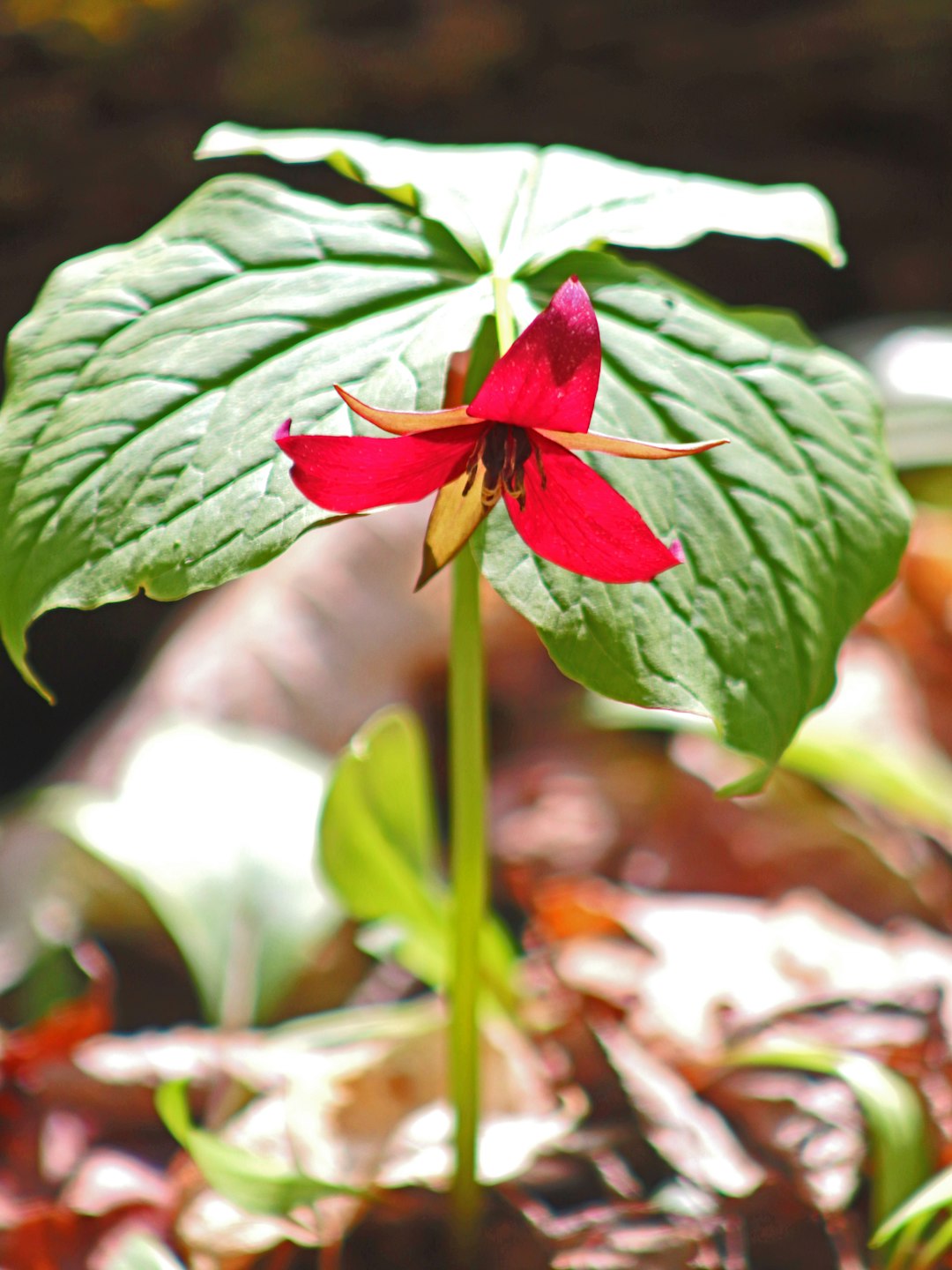Spring ephemerals appear come and go quickly but their lives are longer than they seem. Found in deciduous forests throughout temperate regions of the world, these mysterious plants spend most of their time as bulbs or rhizomes underground. In early spring, they take advantage of sunlight that reaches earth before leaves on the trees unfurl.
Here are a couple spring ephemerals we’ll explore during our online plant walk for paid subscribers at 11am EST tomorrow.
Red Trillium (Trillium erectum)

Throughout most of Trillium’s extensive range, they are classified as an endangered or vulnerable species. Trillium is a slow-growing plant whose seeds take two years to germinate, three years to grow the first leaf, and up to 15 years before flowering. And though the flowers are beautiful, picking them may result in the plant’s early death or if the flowerless plants do survive, picking the blossoms may render them unable to flower for many years. When able to establish themselves without interruption, these beautiful plants can live for up to 30 years.
Ramps (Allium tricoccum)
Ramps are long-lived perennials, taking at least seven years to produce seed. The combination of the rare, limited availability of these plants and the brief window in which they’re available makes them highly coveted. But sadly, many patches are now extinct because of unsustainable harvesting. United Plant Savers has placed ramps on their “to-watch” list.
Since most people harvest the entire plant, including the bulb, the older plants will not be around to generate more seed and repopulate the area.
If you find a healthy and abundant stand of wild ramps, one way to harvest with the least damage is to gather just one leaf (the leaves are also really flavorful) and leave the bulb. This will allow the plant to continue photosynthesizing and feed the bulb so that the plant might produce a flower and seeds. Removing all the leaves will make the bulbs go dormant, unable to complete their life cycle.

While spring ephermals come and go, edible and medicinal plants such as garlic mustard (pictured above) appear in abundance. These plants are can be harvested instead of ‘at risk’ plants like ramps. We’ll discuss some abdundant plants like dandelion, cleavers, nettles and chickweed during the plant walk as well, and discuss safe and ethical wildcrafting.
If you’re not a paid subscriber and would like to join tomorrow’s online walk, it’s not too late to upgrade to a paid subscription. If you do, you’ll be helping to keep this newsletter going and have access to future plant walks and live talks. I hope to see you there!
.



My curiosity of spring ephemerals help me leave my indoor hibernation and get out into the woods...they are indeed fleeting and it is such a gift to be in the presence of these plants!